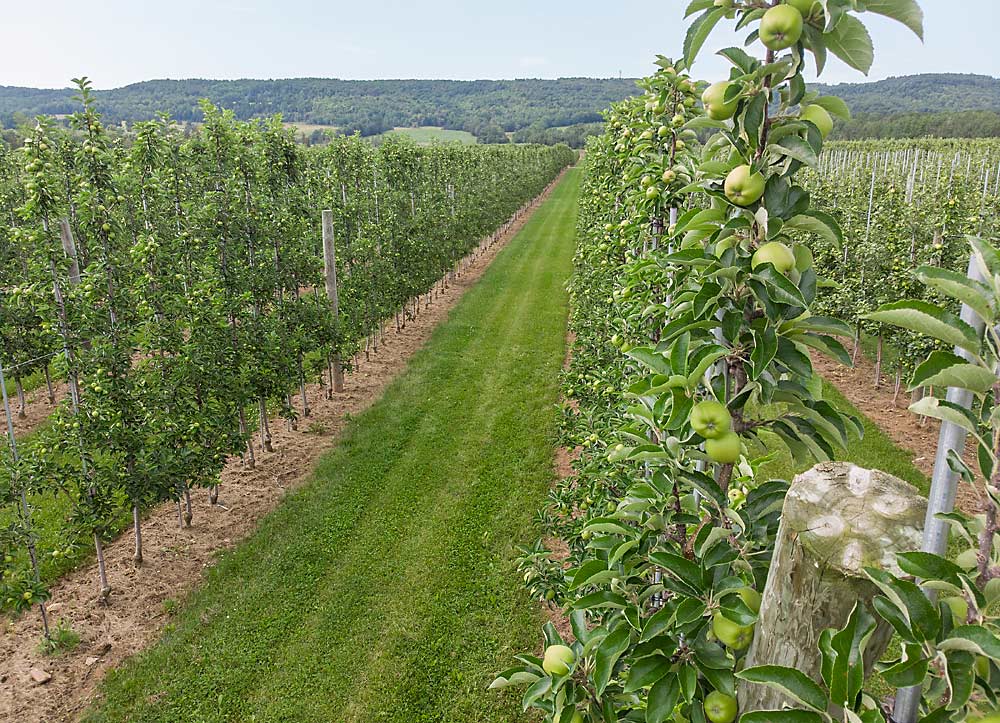
Canadian growers have decades of experience growing Ambrosia, the apple that originated in British Columbia, but the variety is still relatively new to most U.S. growers — who couldn’t plant it until after its patent expired in 2017.
Orchardists outlined Ambrosia’s horticultural characteristics during the International Fruit Tree Association’s tour of Nova Scotia in July. With close to 300 acres, Ambrosia now ranks second among apple plantings in the province, after Honeycrisp. Growers made clear to their IFTA guests that while Honeycrisp remains the moneymaker in Nova Scotia, the quality of the Ambrosia apple fills out their crop mix and brings in a decent profit. Like any other variety, however, Ambrosia has its challenges.
Standing in front of a block of Ambrosia, Minneiska (marketed as SweeTango) and Honeycrisp planted in 2020, grower Larry Lutz told IFTA visitors that Ambrosia struggles to reach adequate fruit size in Nova Scotia’s short, cool growing season and is prone to fire blight infection, which has been a consistent problem throughout the province since a hurricane spread the disease in 2014.
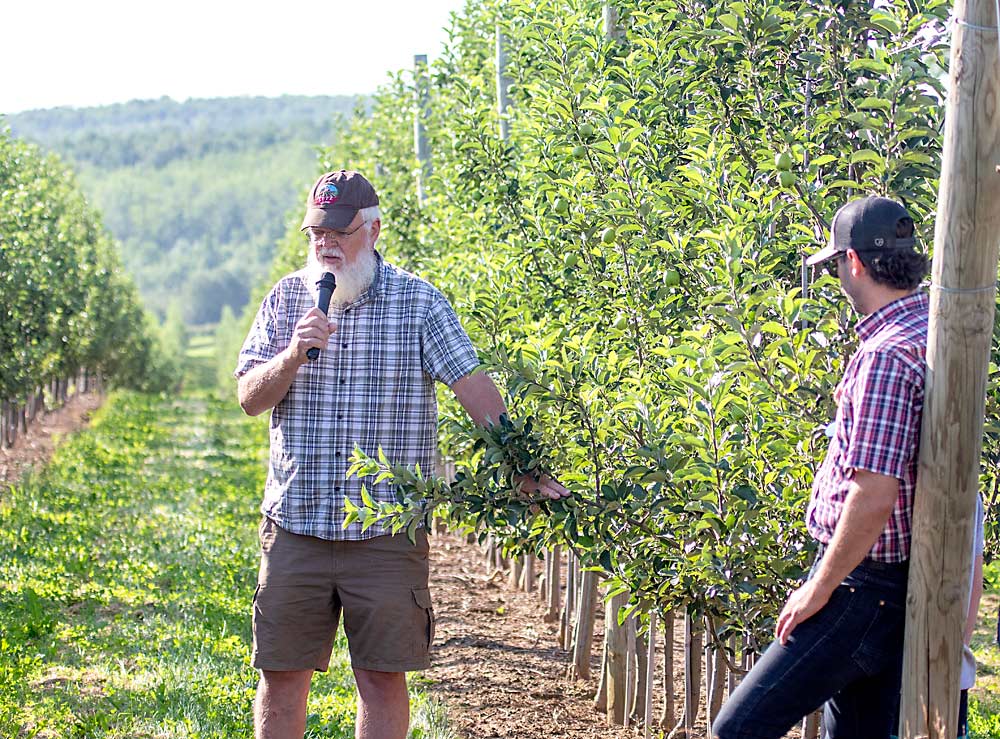
Lutz’s son-in-law, Cassian Ferlatte, said Ambrosia trees on vigorous rootstocks grow big, upright branches. The growers prune off the big branches to leave smaller, softer branches that end up producing more fruit.
“For Ambrosia, the take-home message is that you’ve got to have a canopy if you’re going to have fruit,” Lutz said. “These big, ugly branches don’t give you apples.”
One of their older Ambrosia blocks initially yielded low-quality apples, but fruit quality went up and vegetative growth slowed down when they switched to pruning after bloom. They also apply Apogee (prohexadione calcium) twice a year, which reduces vigor and increases fruit quality, Ferlatte said.
At CAP Farms, growers Eric Chappel and Andrew Parker showed the IFTA tour a 2013 planting of Ambrosia on Malling 26, their preferred rootstock. They use drip irrigation on their sandy soils, which is a rarity in Nova Scotia, where most orchards are rain-fed.
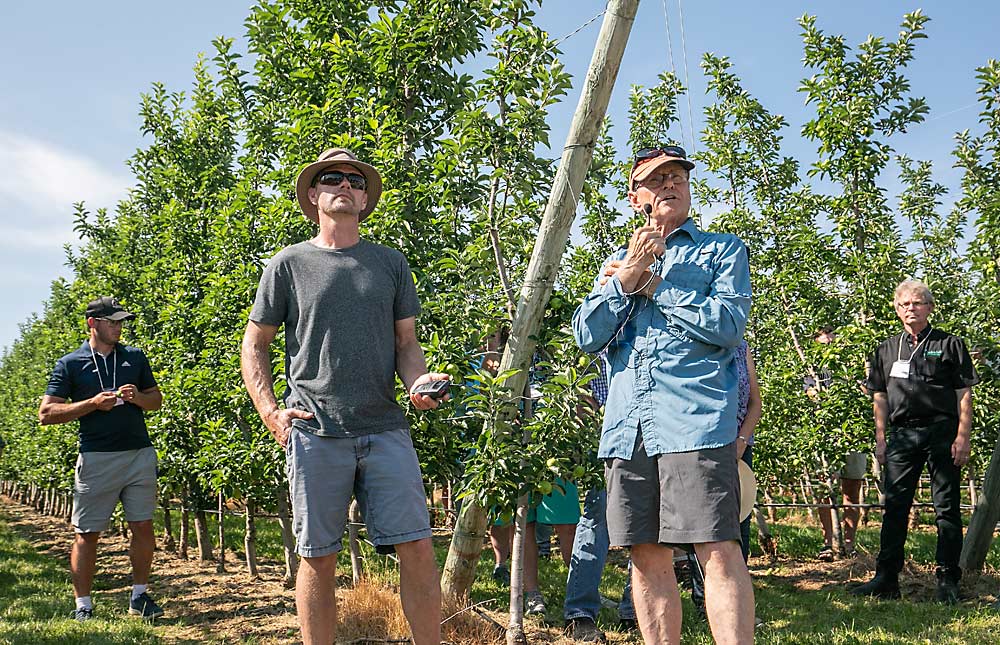
They prune Ambrosia’s big, upright branches to slow down the trees and send more energy to the weaker branches. They chemical thin with MaxCel (6-benzyladenine) and follow with touch-up hand thinning. Aiming for 60 apples per tree, they thin, prune and fertilize early and aggressively to reach adequate fruit size.
Ambrosia has a long, brittle stem. Nova Scotia winds can knock the apples around, bruising them or breaking off the stems completely, leading to fruit drop, Chappel said.
Ambrosia harvest poses another challenge: Its Nova Scotia picking window is a few days in mid-October, right after Honeycrisp. Late picking can lead to greasiness or stem cracking in storage, but early picking can butt up against Honeycrisp harvest.
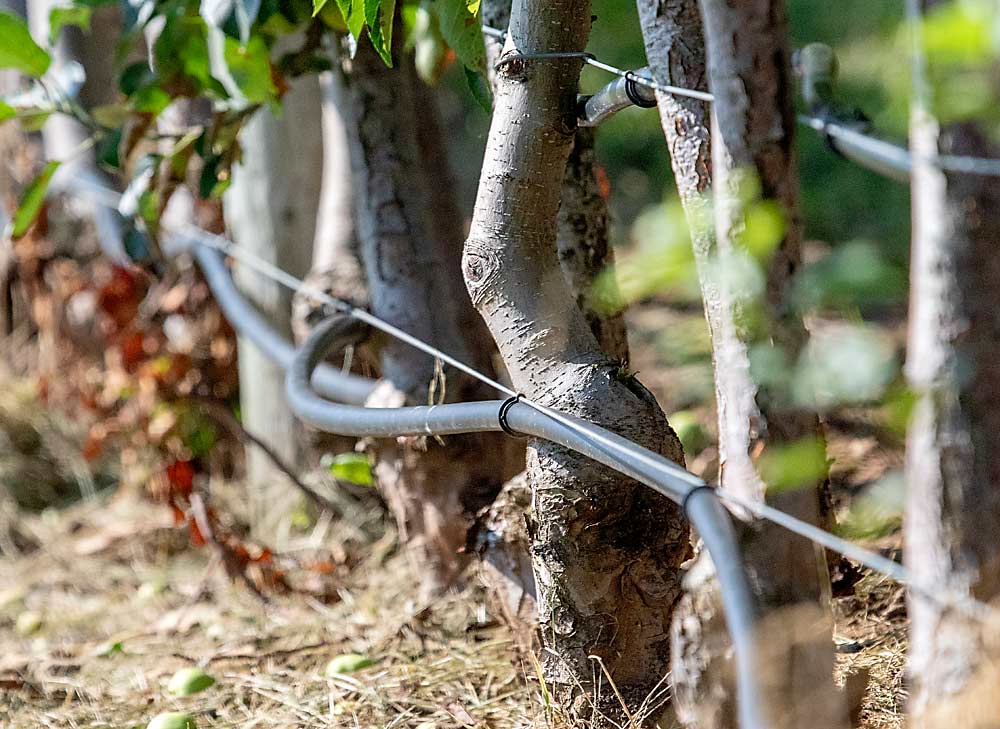
“We want to be picking Honeycrisp in that window, so we don’t really have any future planting plans for Ambrosia,” Parker said. “It’s a good apple, but we just like what Honeycrisp pays a whole lot more.”
Grower Henry Wohlgemuth told Good Fruit Grower that Ambrosia’s picking window is prime time for storms in Nova Scotia. An approaching storm ensures he harvests Ambrosia in one picking.
“When they’re ready, we just take them off,” Wohlgemuth said. “We don’t go through and double-pick any of them. I think we suffer a bit on packout because of that, but you just get through and they’re all in the bin.”
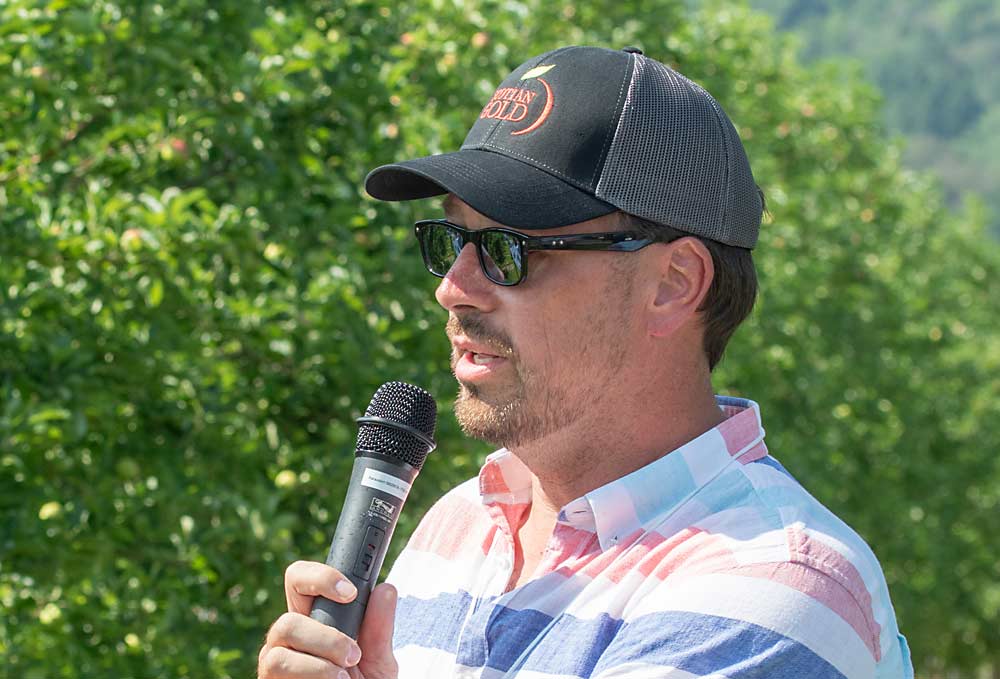
Grower Ryan Swanson said Ambrosia and Honeycrisp fit nicely at his orchard. The varieties cross-pollinate well, and after weeks of stem clipping Honeycrisp, picking Ambrosia is a “joy” for his workers.
Swanson’s orchard, Eisses Farms, wasn’t on the IFTA tour, but it probably has the oldest Ambrosia trees in Nova Scotia. The first Ambrosias were planted in 2004 at 3 feet by 14 feet. Hurricane winds have severely damaged the block, leaving trees and trellises leaning slightly and some of the roots exposed. Swanson is trying to straighten the trees by inserting more poles into the trellis.
“I don’t know if we’ll be able to correct it,” he told Good Fruit Grower. “I just don’t want to replace it because it’s a decent producing block.”
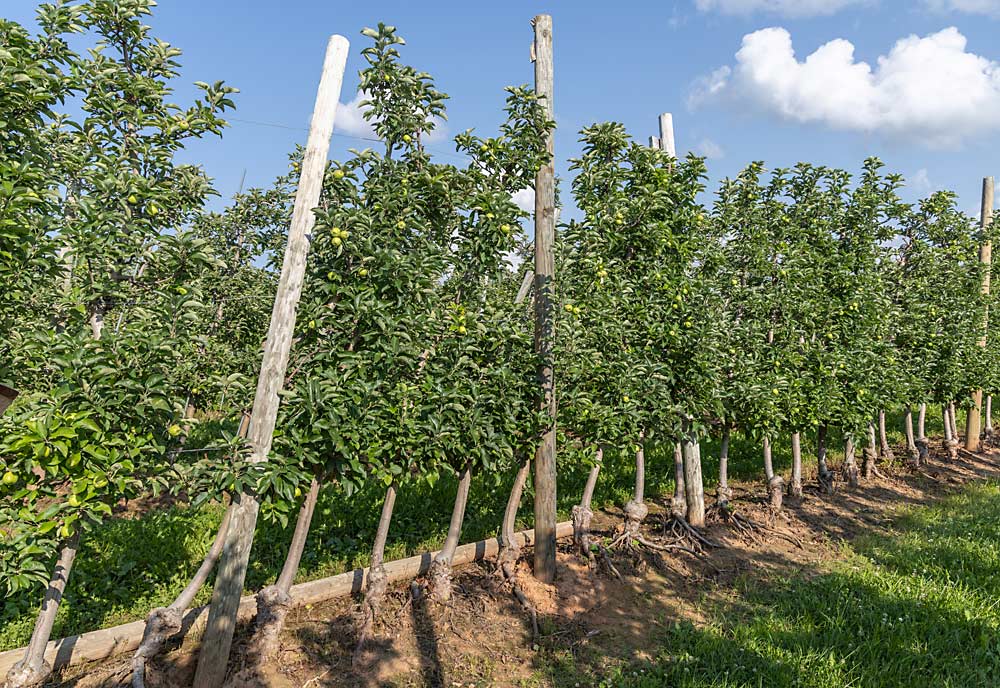
He said Ambrosia earns a good profit and its yields are consistent. Eisses Farms has 16 bearing acres of Ambrosia, with another 3 acres in the ground. Their newest plantings are 2 feet by 11 feet. Ambrosia averages nearly 800 bushels per acre on his farm.
After years of experimentation in its soil and climate, Eisses Farms decided rootstocks Budagovsky 9 and 10 work best with Ambrosia.
“Boy, do they like to grow branches,” Swanson said. “But the B.9s are a bit calmer.”
Swanson uses Fruitone (1-naphthaleneacetic acid, sodium salt) for bloom thinning, usually 7 to 9 parts per million, depending on the size of the bloom.
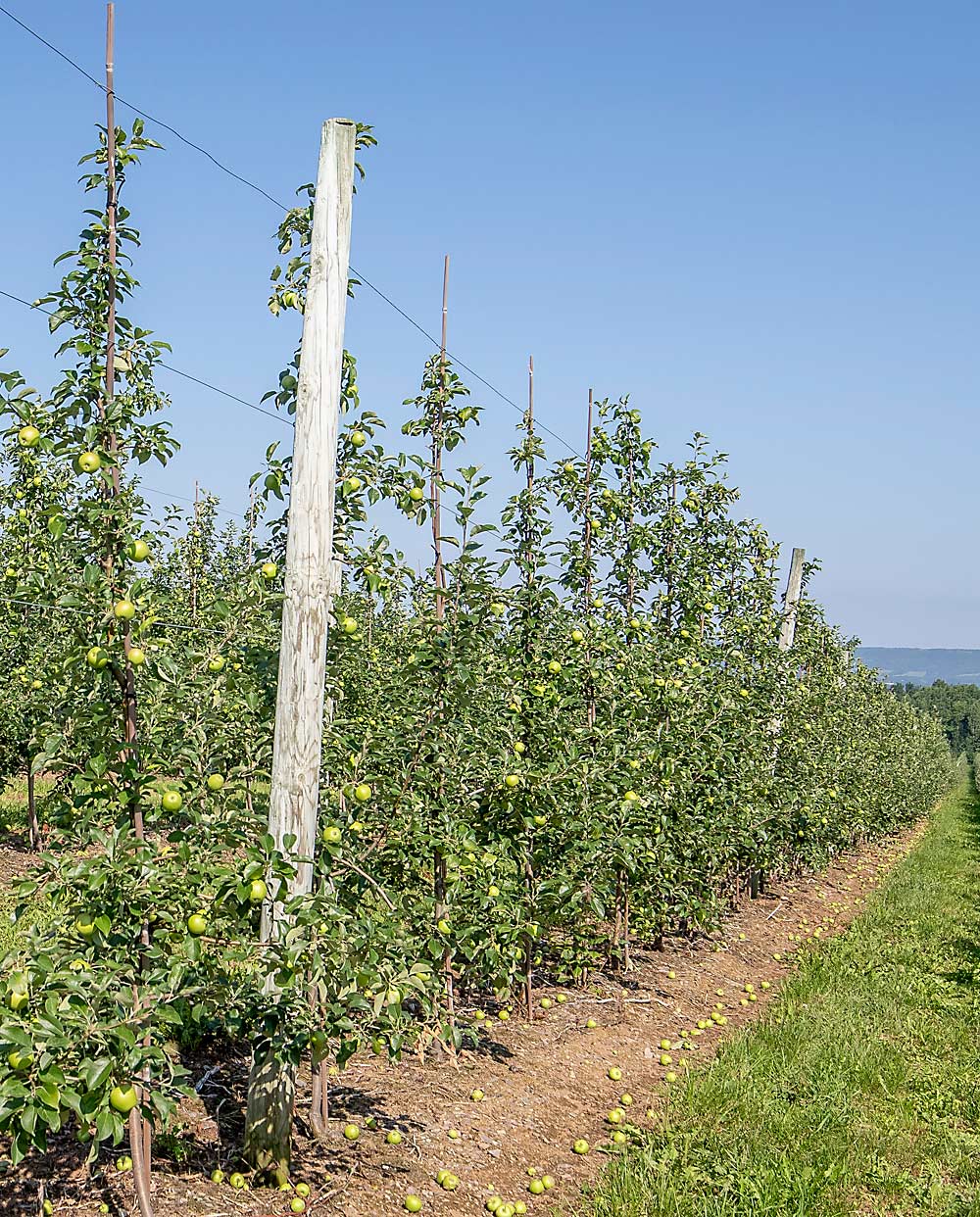
IFTA attendees also shared some of their Ambrosia experiences with Good Fruit Grower. Mo Tougas, who runs a U-pick orchard in Massachusetts, planted Ambrosia in 2017 and 2018 on Geneva 41 and M.9. He said it took the Ambrosia trees a couple of years to fill their canopies. He got his first real Ambrosia crop last year, and his customers picked them fast. He plans to plant more.
Earlier this year, Michigan grower Noah Roth planted 5 acres of Ambrosia on B.9.
“Our soil is very good — it’s virgin dairy ground — and I’m only trying to grow a 10-foot tree, so B.9 should be plenty,” he said.
The rows were spaced 10 feet apart, with the trees planted either 1.5 or 2 feet apart to test different spacings.
“We toured a few orchards planted the first year Michigan was allowed to grow (Ambrosia), and it was plain as day the closer you go the better,” Roth said. “So, we decided to push it and see if spending the extra on 18 inches will be worth it.”
—by Matt Milkovich

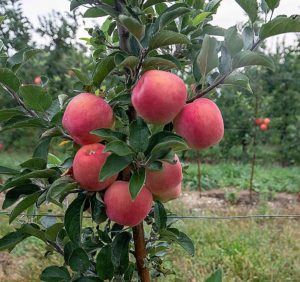
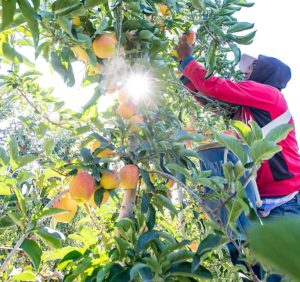





Leave A Comment